As Earth Day approaches (mark your calendars! April 22nd!), I’ve been thinking about ways to reduce and reuse the things I don’t need in my life anymore. I’m pretty good about recycling what I can – cardboard, papers, and bottles go in the curbside recycling, and compost I take to the local natural foods store. Plastic bags go to grocery stores with those plastic bag bins up front, along with other random thinner plastics like cereal bags, plastic wrap, and bread bags. If you don’t have access to a plastic bag recycling bin, you can reuse your plastic bags by fusing them together to create a waterproof, flexible fabric!
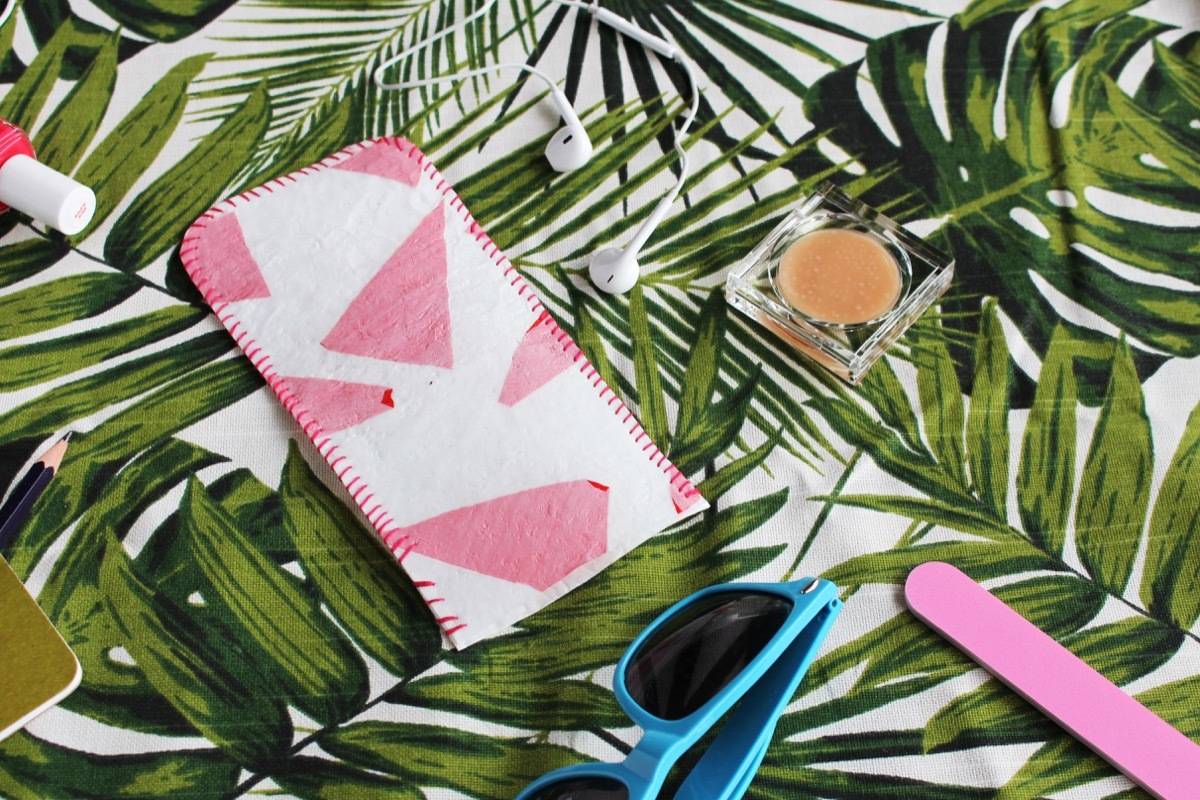
This fused plastic fabric is great for making things that need to be durable or waterproof. Once you’ve made your plastic bag fabric, you can use it to make lunch sacks, wallets, or make a sunglasses case like I did.
Materials
- Plastic bags (shopping bags, cereal bags, pet food bags – the thinner ones work better)
- Wax paper, parchment paper, or freezer paper
- Iron and ironing board
- Scissors
- Thread and needle (if sewing with your fabric)
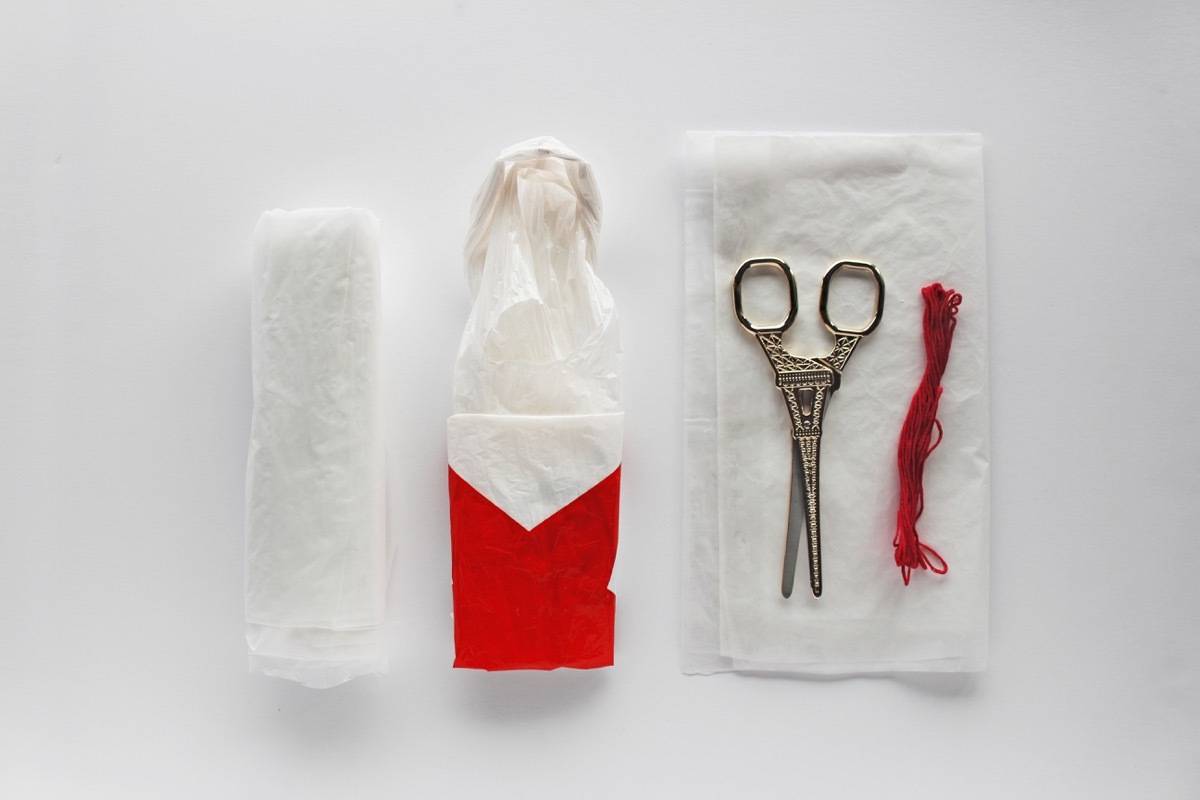
Step
Flatten out your bags, and trim off any seams or handles. The goal is to create a flat piece of plastic. For this project, I used a combination of plastic bags and a used plastic drop cloth that I didn’t need anymore.
Step
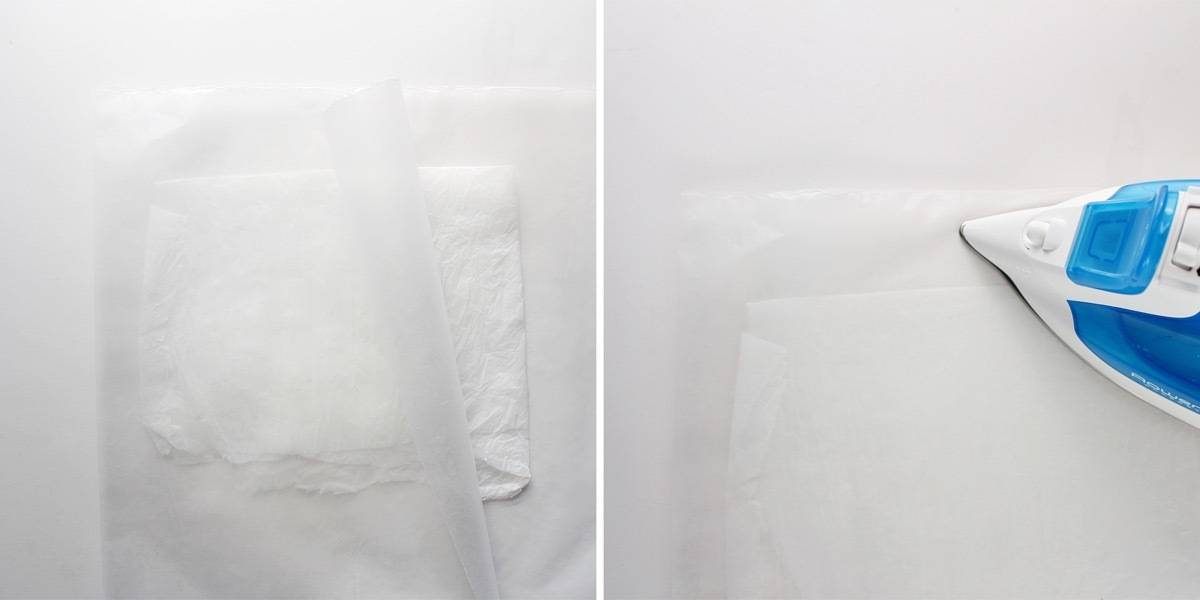
Sandwich the flattened plastic between two sheets of parchment paper, wax paper, or freezer paper. If using wax paper, lay the paper wax-side in.
Pre-heat a dry iron to a temperature somewhere between medium and medium-high (you may have to do some experimenting to see what works best for you). Iron across the surface of the sandwiched papers and plastic, keeping the iron moving. Avoid letting the hot iron sit in one place for too long. After 15-20 seconds, flip over and repeat the ironing process on the other side.
Step
CAUTION: Plastic will be hot for this step!
Peel back the waxed paper to see how the plastic fusing is going. The plastic should be one coherent sheet. If it is not, continue ironing. If the plastic is sticking to the paper, or if the plastic is forming holes, your iron is too hot.
If you want to bump up the thickness of the fused fabric, wrap the plastic “fabric” in another layer or two of plastic bags, and repeat the ironing process. You can continue to add as many layers as you like this way.
Step
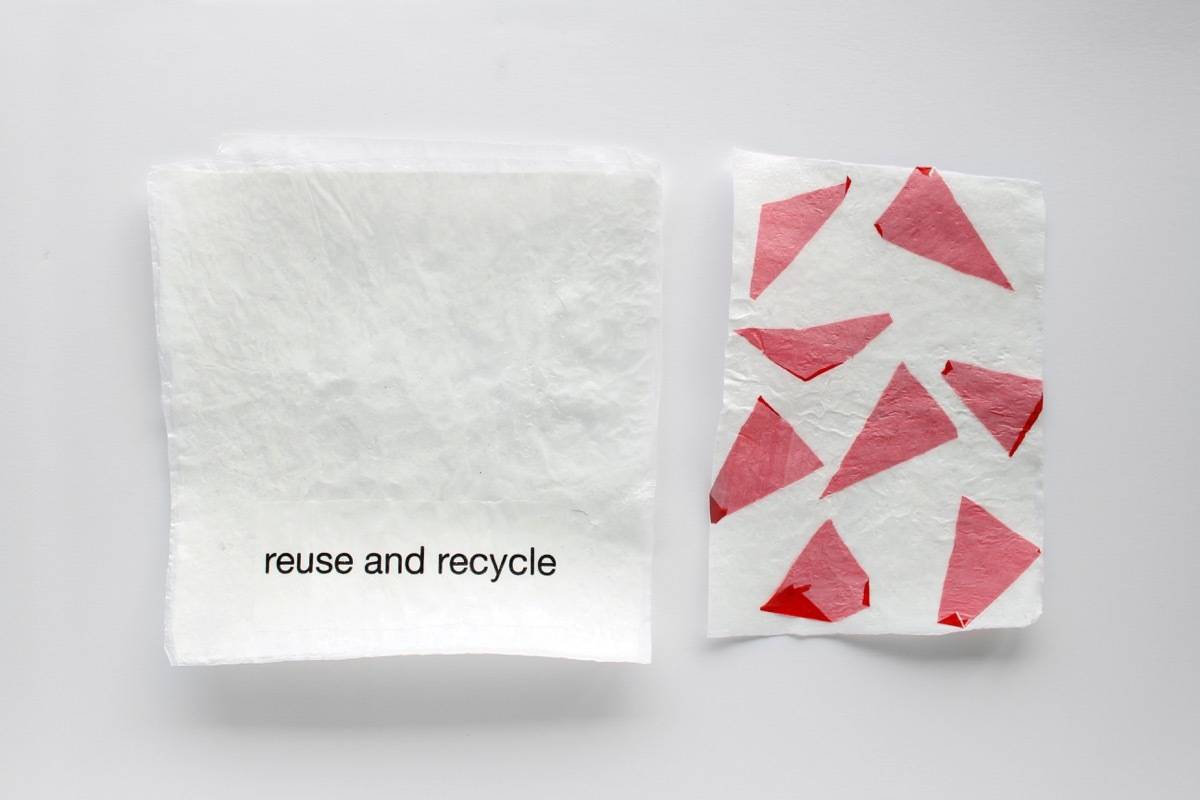
If you want more funk in your fabric, cut colorful pieces of plastic or text from plastic bags, and iron to the top of the finished plastic just as you did before – between the two pieces of waxed paper.
Step
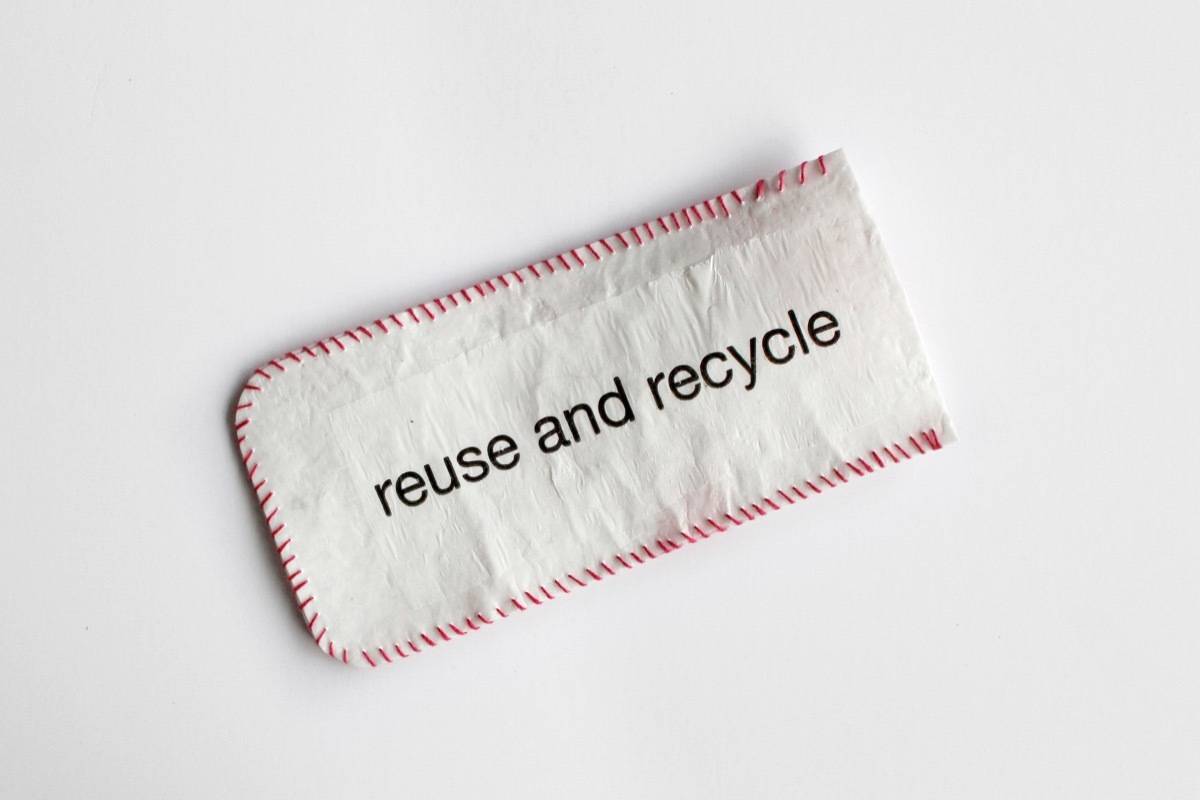
To make this sunglass case, cut two rectangles from the plastic fabric, rounding the corners on one end. Stitch* around three sides, leaving one narrow end open.
* Because this “fabric” is made of plastic, any holes put into the fabric will remain permanently. If you want to pin this fabric in place as you stitch, use washi tape or masking tape to hold pieces in place rather than putting pinholes in your project.
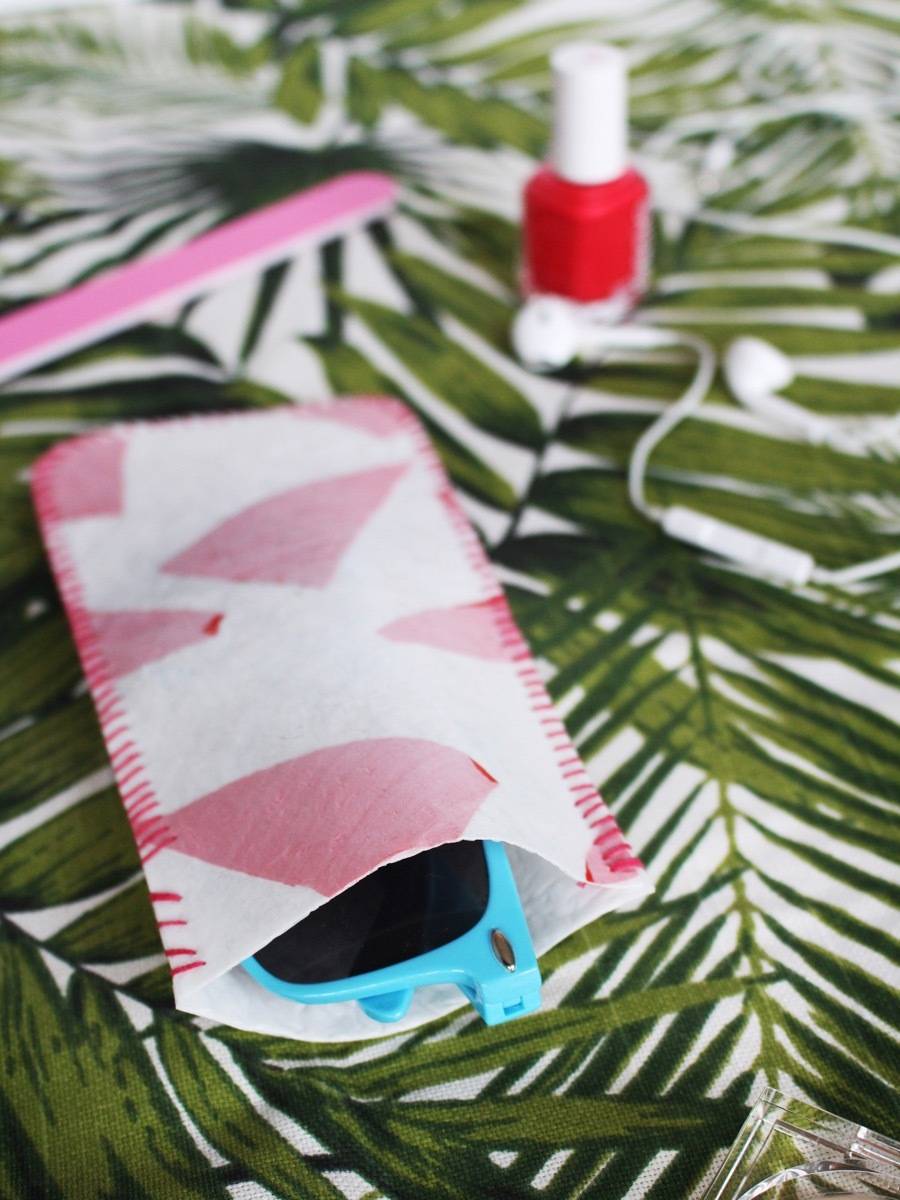
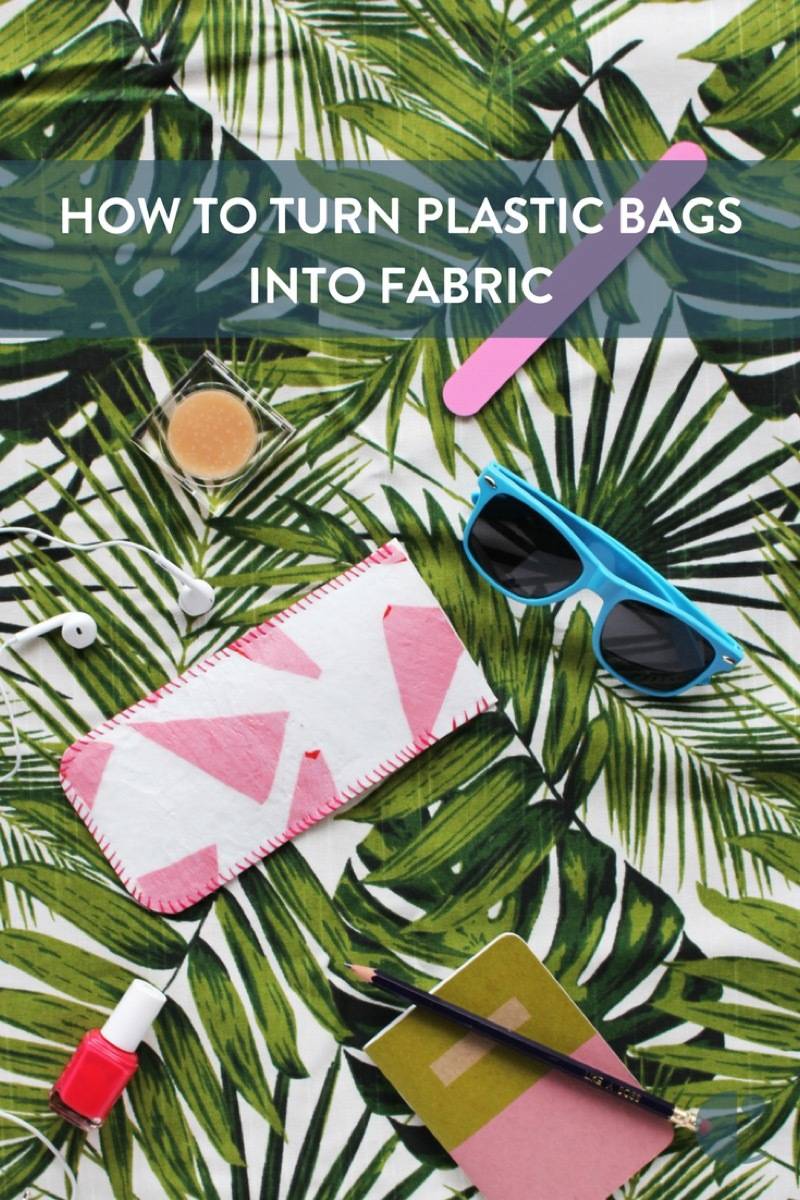
You don’t have to restrict yourself to plastic bags from the grocery store! You can fuse any type of thin plastic, from ziplocked bags to package wrappers. Don’t forget to open a window before fusing, though!
Ditch plastic bags altogether by making a few of these reusable, upcycled farmers’ market totes!
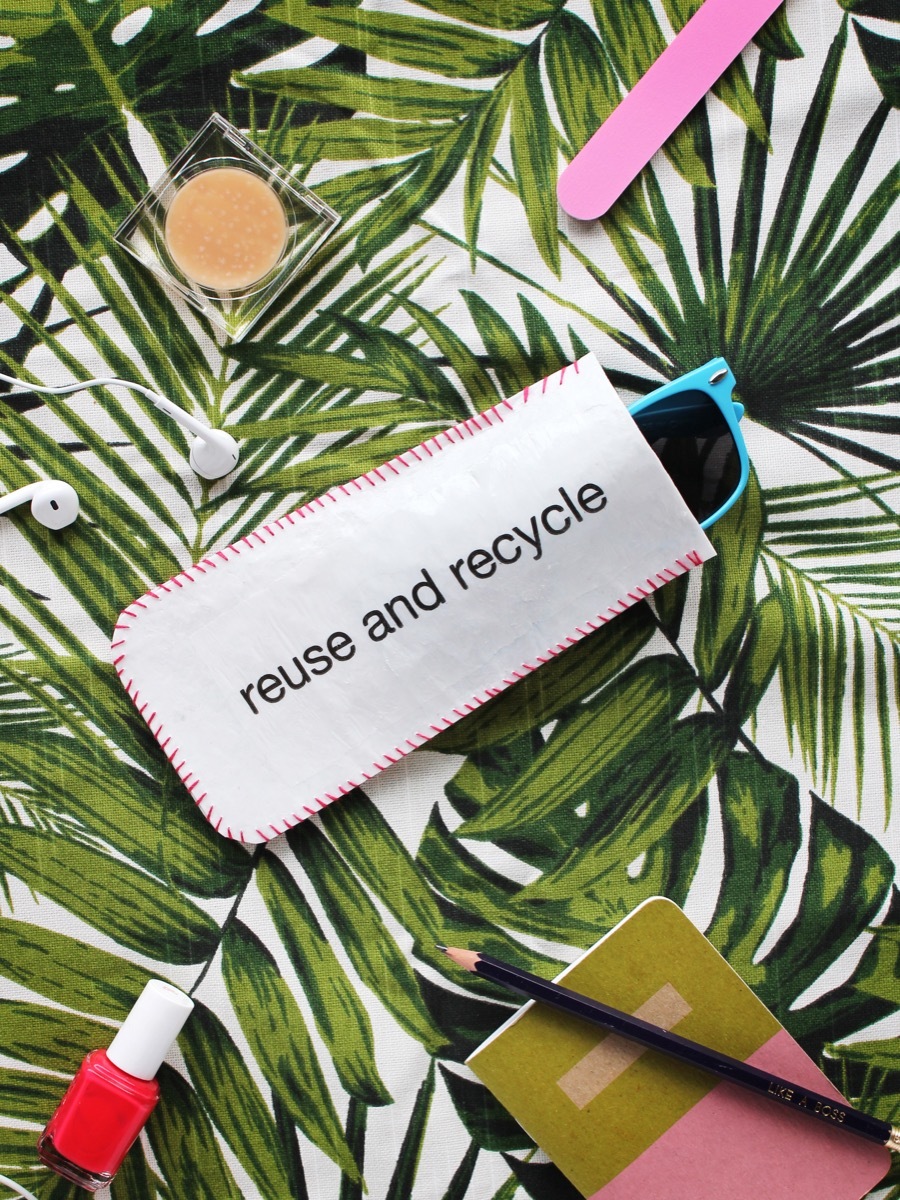
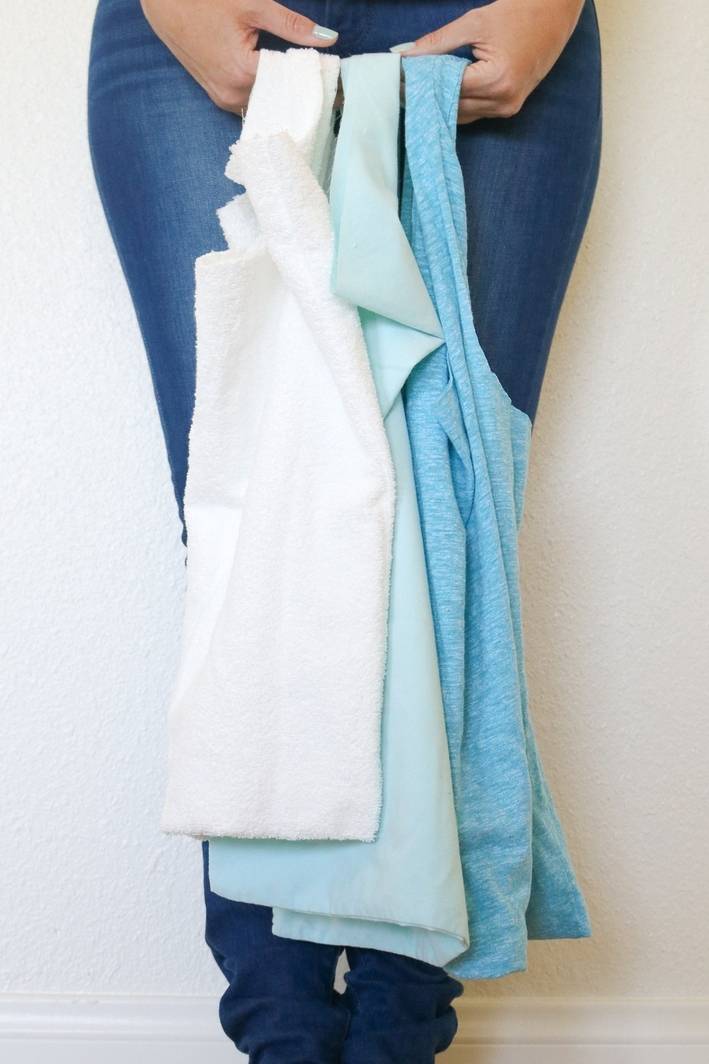
It’s ironic that Earth Day is referenced in the description of this project. This project is in no way environmentally friendly.
The fumes from melted plastics are considered legacy pollutants. This means that once in the environment they are not broken down into harmless compounds, they stick around and build up in the environment. Once released into the air, they travel all around the globe and usually settle in the ocean, where they accumulate in the bodies of fish, marine mammals, and anything that eats them – like us, for instance. These compounds are highly toxic and are known carcinogens. How do I know? I’m an environmental chemist.
Please don’t melt plastic.